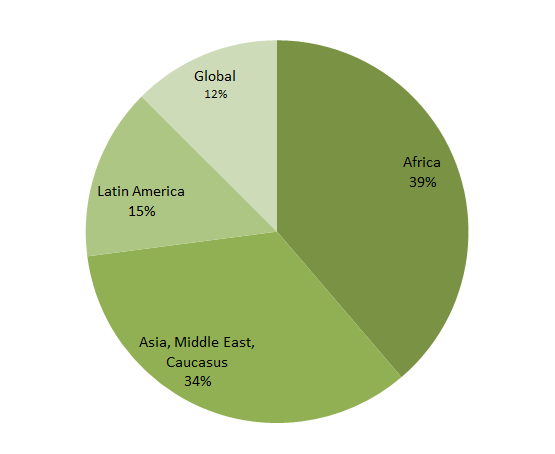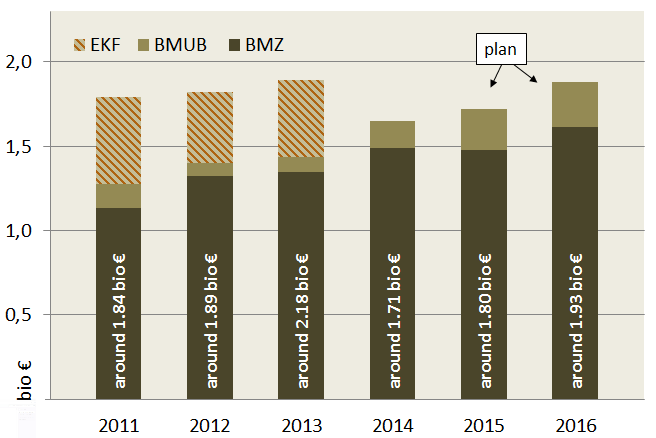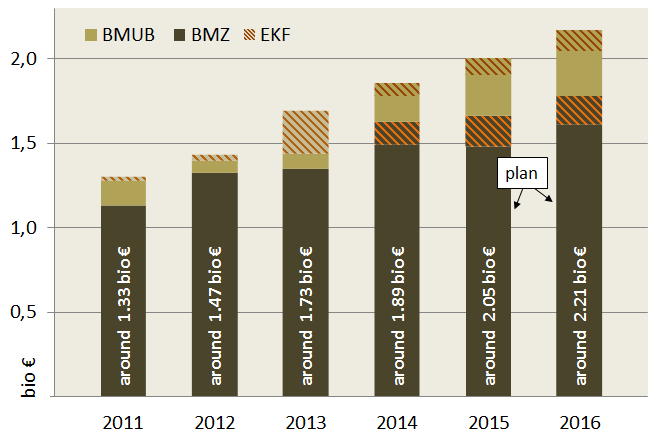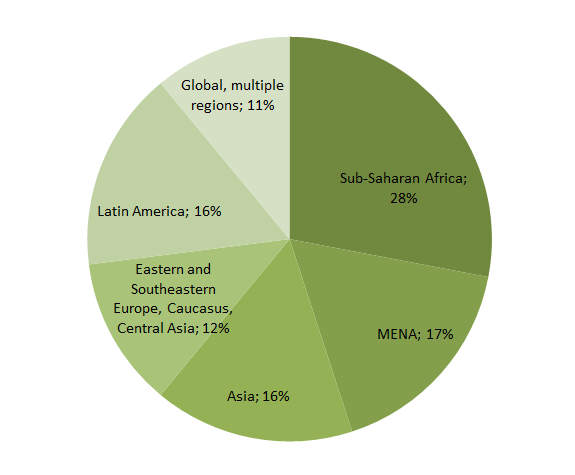German climate finance / Transparency
German climate finance in detail: the project database as a tool for independent review

German climate finance in developing countries has to be transparent. Photo: C.Krackhard, Brot für die Welt
We recently updated our database: information on financing commitments up to and including 2014 are now available (the German government publishes lists of bilateral commitments with some delay, and figures for 2015 have not yet been released). Germany’s commitments for mitigation and adaptation in developing countries from 2008 to 2014 can now be reviewed almost entirely on the basis of the individual projects funded.
Improved transparency, but reporting has only been partially standardized
The updated database shows that the German government has made progress in the transparency of German climate finance. A joint list containing all of the projects of the Federal Ministry for Economic Cooperation and Development (BMZ) and the Federal Ministry for Environment, Nature Conservation, Building and Nuclear Safety (BMUB) is available thanks to reporting to the European Union in compliance with the European Monitoring Mechanism Regulation (MMR). This list also serves as the basis for the biennial reports to the UNFCCC secretariat. As a report by Adaptation Watch at the end of last year showed, Germany is thus satisfying an important transparency criterion, even though there is still room for improvement in other areas.
Nevertheless, our database remains the only place where information on German climate finance from the various ministries has been compiled for the German public, as the government still only provides such information a bit at a time. The available material varies considerably in the respective BMZ and BMUB online publications. The BMZ publishes lists of bilateral measures for each financial year that also shed light on the extent to which individual projects are counted toward climate finance based on the Rio markers. Descriptions of the funded projects are not provided, however. Finding this information requires manually searching the websites of the implementing entities, above all those of the German Association for International Cooperation (GIZ) and the KfW development bank. The number of publicly available project descriptions depends on the practice of the individual organizations – and in this respect the GIZ is well ahead of the KfW. By contrast, the website of the BMUB’s International Climate Initiative (ICI) provides descriptions of each of the initiative’s projects. On the negative side, the ICI does not provide overview lists to the public, and the year in which projects were approved is not apparent. Our project database combines these two approaches, collecting information from the various sources and thus providing both project lists and descriptions.
Gaps in reporting
In compiling the information, inconsistencies of the government’s reporting also became apparent to us. These affect the special Energy and Climate Fund (EKF), for example. In this particular case, the government counts disbursements in a given year (i.e. the annual disbursements related to past bilateral commitments) and not – as is otherwise common practice in bilateral climate finance – the financing commitments made (which are covered by appropriations for commitment) as a basis for allocation to financial years. Going by the German government’s official figures, it would thus appear that climate finance has grown steadily in recent years, even though the annual level of project commitments in 2016 is not higher than in the years 2011 to 2013.
Fig. 1: Development of German climate finance 2011-2016
The graphs show funds pledged from the individual BMUB and BMZ budgets and from the EKF, the latter on the basis of pledges (upper figure) and disbursements (lower figure). Source: Oxfam, author’s presentation based on German federal government data 2013-2015
On the other hand, the change in the accounting method is also reflected in the reporting. Projects financed via the EKF are not reported on an individual project basis and thus appear on the project lists as aggregate disbursements only. This reduces transparency and hampers an independent review of the overall figures reported by the government. The database thus only contains projects derived from older project lists from 2012. Differences thus arise to the aggregate figures reported elsewhere by the government. For example, while the government reported that the BMZ had committed €136.8 million to adaptation projects in 2012, only €113.8 million can be accounted for using the project lists. Similarly, the government states that the BMUB committed €72.3 million to forest conservation/REDD+ projects in 2011. According to the project lists, however, that figure is €76 million. Such discrepancies cannot be resolved on the basis of the publicly available information.
A lack of transparency also arises from the fact that financing commitments for loans in bilateral development cooperation are only stated as allocated budgetary resources; it is not apparent here that the commitments are loans, nor is the project (or loan) amount stated. This can be only be determined by painstakingly comparing the individual projects in the overview lists with the respective KfW project descriptions or the OECD-DAC lists. While the transparency being created with regard to the deployed budgetary resources is welcome, a fuller disclosure would still be helpful in breaking down what Germany is supporting with loans and what with grants.
The database as a monitoring tool
The database nevertheless allows an independent comparison of the German government’s figures. For example, the development of financing commitments for the years 2008 to 2014 can be broken down in greater detail using OECD accounting standards (i.e. including the funds pledged via the EKF from 2011 to 2013, according to the years in which the financing commitments were made). Likewise, when applying World Bank income categories to the analysis of climate finance, it can be established that only 15 percent of the funds went to least-developed countries (LDCs) from 2008 to 2014.
A comparison of the regional distribution of climate finance by the BMZ for 2014 shows some differences between the government’s figures and those of the database. Deducting commitments to the MENA countries from the funds earmarked for Africa by the BMZ reduces the share of commitments to sub-Saharan countries from 39 to 28 percent. The same applies for Asia, to which the BMZ allocates funds for some MENA countries, as well as Europe, the Caucasus and Central Asia. Commitments for the countries of South and Southeast Asia account for less than half thereof.
Fig. 2: Regional distribution of BMZ climate finance in 2014

Regional distribution of climate finance in 2014 according to the BMZ
In addition to project lists, our database contains details on the individual projects. Independent information for some REDD+ projects has also been collected and linked with the projects on a pilot basis. Examples for this include the Forest Carbon Partnership Facility (FCPF) and the Climate Protection through Avoided Deforestation (CliPAD) project in Laos. Likewise, it provides the basis for a qualitative assessment of German climate finance. The database is thus a tool with an expandable scope for the critical monitoring of German climate finance.
Christine Lottje







